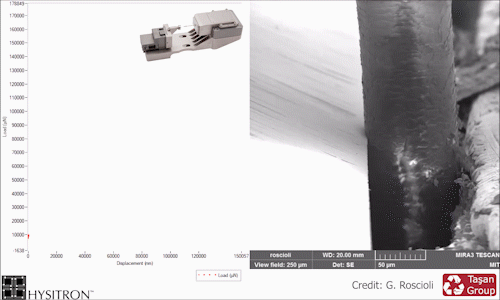Interesting article by MIT. Don't know if this has been posted yet or not. Down below, I pasted some excerpts from the article that I found interesting on what causes shaves to get dull. Do the results surprise you or does it verify what you already knew? I know about homogenous super steels for knives and the benefits for them, but I'm not really familiar in detail about razor steels and how homogenous they are, and that seems to be a pretty important factor in dulling. And the angle of attack, I know there are some differing preferences of the angle of attack when it comes to shaving, but knowing this information is a bit enlightening and something I may keep in mind when practicing my shaves as well. Thoughts?
Why shaving dulls even the sharpest of razors - https://news.mit.edu/2020/why-shaving-dulls-razors-0806


"he found that chips did not occur when the hair was cut perpendicular to the blade. When the hair was free to bend, however, chips were more likely to occur. These chips most commonly formed in places where the blade edge met the sides of the hair strands."
"They found that the simulations predicted failure under three conditions: when the blade approached the hair at an angle, when the blade’s steel was heterogenous in composition, and when the edge of a hair strand met the blade at a weak point in its heterogenous structure."
“Our simulations explain how heterogeneity in a material can increase the stress on that material, so that a crack can grow, even though the stress is imposed by a soft material like hair,” Tasan says."
The researchers have filed a provisional patent on a process to manipulate steel into a more homogenous form, in order to make longer-lasting, more chip-resistant blades.
“The basic idea is to reduce this heterogeneity, while we keep the high hardness,” Roscioli says. “We’ve learned how to make better blades, and now we want to do it.”
Why shaving dulls even the sharpest of razors - https://news.mit.edu/2020/why-shaving-dulls-razors-0806

"he found that chips did not occur when the hair was cut perpendicular to the blade. When the hair was free to bend, however, chips were more likely to occur. These chips most commonly formed in places where the blade edge met the sides of the hair strands."
"They found that the simulations predicted failure under three conditions: when the blade approached the hair at an angle, when the blade’s steel was heterogenous in composition, and when the edge of a hair strand met the blade at a weak point in its heterogenous structure."
“Our simulations explain how heterogeneity in a material can increase the stress on that material, so that a crack can grow, even though the stress is imposed by a soft material like hair,” Tasan says."
The researchers have filed a provisional patent on a process to manipulate steel into a more homogenous form, in order to make longer-lasting, more chip-resistant blades.
“The basic idea is to reduce this heterogeneity, while we keep the high hardness,” Roscioli says. “We’ve learned how to make better blades, and now we want to do it.”
Last edited:




